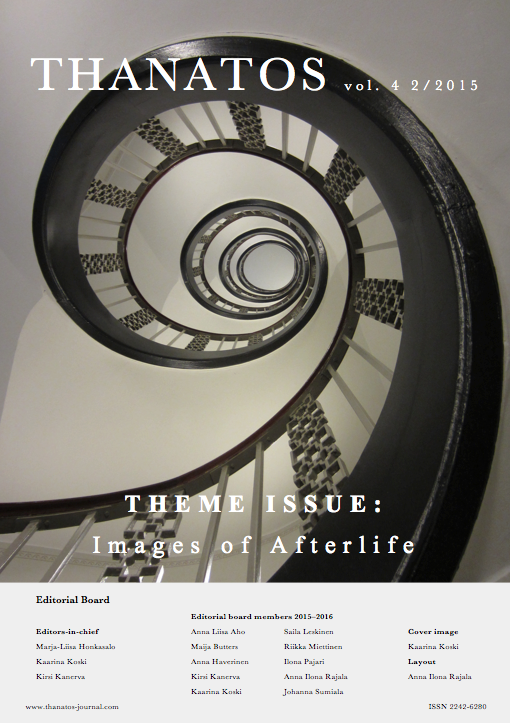Remedies against Revenance: Two Cases from Old Hailuoto (Karlö), North Ostrobothnia, Finland
Abstract
Hailuoto is fairly large island in the northern Bothnian Gulf that was settled in the 11th century. A small auxiliary chapel began to operate on the island in the early 15th century and Hailuoto became an independent parish in 1587. Since then Hailuoto has developed its rich own island culture, which includes many tales of apparitions and hauntings. Among them there is a story of the alleged revenance of a man that had hanged himself on the island in the mid-18th century. According to local lore, the deceased could not rest in peace in churchyard consecrated soil and kept wandering about and disturbing people. For this reason his body had to be exhumed and taken by boat and buried in the woods of Hanhinen Island, where a stone setting still marks the grave. Interestingly, the 1761 church registers confirm the burial of the suicided man at that same place. The information about a second unusual burial comes from archaeological research. The excavation of the Hailuoto Church ruins was conducted by Oulu archaeologists during 1985–1987 and produced dozens of late medieval and early modern burials, including a somewhat isolated, coffinless grave that contained the remains of a beheaded adult male. The individual had suffered from severe congenital craniosynostosis (premature cranial suture closure), which had led to considerable head and facial deformation. But even more bizarre was the fact that the skeleton was associated with two wooden stakes: one through his chest and the other right next to his detached cranium. This paper describes and discusses the details surrounding these two unusual burials in the light of archaeological, bioanthropological and ethnohistorical data.
Downloads
Published
Issue
Section
License
Copyright (c) 2023 Milton Núñez

This work is licensed under a Creative Commons Attribution-NonCommercial-NoDerivatives 4.0 International License.





